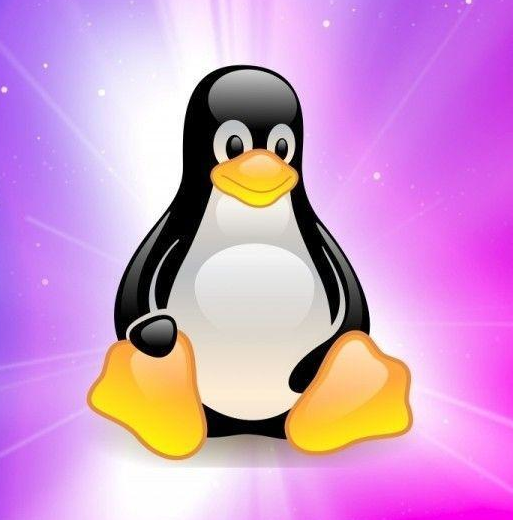f00f/eris
Here to follow content related to Star Trek, Linux, open-source software, and anything else I like that happens to have a substantial Lemmy community for it.
Main fediverse account: @f00fc7c8@woem.space
- 2 Posts
- 21 Comments
Going by their Mastodon account, seems they were erroneously detected as “from a US-sanctioned region” and it took too long for said error to be resolved, so they just made the switch.
I’m not a classic Linuxer (I switched in 2015) but I did once try Mandrake out of historical curiosity. From what I hear it was the recommended “beginner-friendly” distro before Ubuntu came out. And based on how hard it was to get working on a VM, I now understand why classic Linuxers talk about Ubuntu like it was this huge sea change.
It’s nice that major news outlets are saying what we nerds have been screaming for the past two decades. Microsoft only shares a small portion of the blame for the recent outage (they could have built their OS better so software vendors don’t feel the need to use kernel modules, but the rest is on CrowdStrike) but we are too depenent on them.

 2·1 year ago
2·1 year agoIf my American university has a system in place for students that don’t own Windows, I would not be surprised if yours has a better one :)

 39·1 year ago
39·1 year agoLibreOffice has opened every DOC(X) the school has sent me, albeit imperfectly, and all assignments are turned in as PDFs, which I usually make using Markdown and LaTeX. I have had to use Office 365 for collaboration, but only about twice a year, and that runs very smoothly in Firefox. On one occasion I tried to collaborate with CryptPad, but it didn’t work as well as I hoped.
Most computer labs at my uni run Windows 10, rarely 11, but a lot of the science labs run Linux. A surprising amount of the software required for classes has been open-source, too.
The most frustrating thing has been the lockdown browser used for some exams. My university library has computers I can borrow for exams, but yours might not, and they detect VMs, so you might have to dual boot for that.

 11·1 year ago
11·1 year agoYeah, only thing I can think of is the few banking apps that don’t have web versions.
I was lucky enough to have all my banking and 2FA apps work perfectly on GrapheneOS. The only app that gave me a significant amount of trouble was iClicker, which my school uses for attendance. That was fixed by enabling Google Play location services, and there was a (fairly expensive) alternative anyway.
I did have to buy a new phone to use Graphene, because I got my previous one as part of a carrier’s cell plan, and it had a locked BIOS. Though I think the purchase was worth it, and just moving my SIM card from one device to another was enough to get it working.
of course not!

 7·1 year ago
7·1 year agoThe AtGames Genesis Flashback is more akin to the Ferengi “Genesis Device” from Lower Decks than the original Genesis Device.

 4·1 year ago
4·1 year agoI don’t have much PC building experience, but these specs seem sufficient. Only comment is that you might need to use a distro with a new-ish kernel and graphics stack, given the very recent CPU and GPU. So not Debian stable, but Fedora, Ubuntu, or any rolling release distro will be fine.
Yeah, it’s fake, and as other commenters have pointed out, it’s also inaccurate to how the GPLv2 works. It was not meant to convince anyone.

 121·1 year ago
121·1 year agoI came across a bunch of those recently, which is how I came up with the idea for this, as a parody :)
Internet horror is disappointingly un-creative. I have no idea why the weakest works (sonic.exe, anti-piracy, kill screens) always end up becoming huge trends, or why so few people try to put a significant twist on said trends.

 762·1 year ago
762·1 year agoTons of companies are shipping Linux without giving users access to the source code, it’s just that only one has the term “Tivoization” named after it.

 1·1 year ago
1·1 year agoI’ll probably use Codeberg or another Forgejo server for my next programming project, if/when I have one that is far enough along to publish (motivating myself to get that far is a tall task). Until then, everything I’d consider contributing to is either on GitHub, or is self-hosting some other software, so I don’t have a reason to create an account yet.

 13·1 year ago
13·1 year agoSaru and Kelvin Spock would probably get along really well. Everyone else would be having heated arguments that I think would be amazing to witness, if not take part in.
I think I’d most like to sit between Mariner and Pike, though.
Windows 8.1 was my last version before I made the switch. Windows 8 was horrible. The Metro UI broke all my habits from Windows XP from 7 while also making it harder to tweak my system. By the time 8.1 came out, I’d found enough ways around the main annoyances that its improvements were moot, but many issues remained, such as the bloatware bundled with my PC, and frequent slowness and instability.
As for why I switched, I was attracted by the free software ideal, and trying to get away from Windows, and I had watched and read several things that further convinced me it was superior, but I think the ultimate reason was that I had become hyperfixated on Linux. Thankfully, in this case, autism did not steer me wrong. My level of obsession with Linux has declined, but I still enjoy using my computer much more than I ever did or would on Windows.

 3·1 year ago
3·1 year agoI’m working on possibly outdated second-hand information, so maybe it isn’t happening anymore. I haven’t been dual booting since ~2018 and even then I basically never used Windows.

 14·1 year ago
14·1 year ago- I believe there is still an issue with Windows deleting Linux bootloaders during some updates. You’ll be fine if you install Linux on a separate disk, and even if you dual-boot on one disk and the bootloader gets deleted, there are ways to recover it. You don’t strictly need to have separate data and OS partitions, and I’ve gone back and forth on whether I prefer it - it makes distro hopping and disk encryption easier, at the cost of potentially inefficient use of space and serious consequences if your OS partition fills up.
- Disk encryption is very straightforward if you use separate OS and data partitions. You literally just tick a box during the install and enter an extra password. It won’t upset Windows any more than a normal install does (i.e. Windows might think it’s corrupted, but won’t do anything without your input). With one partition for everything, it’s still possible, but the encryption will be much weaker and handled by the bootloader in a somewhat clunkier way, and I’m not sure if Mint even supports that setup.
- I don’t have much experience with this myself, and certainly not on Linux Mint, so I’ll leave this one to other commenters.
- Synaptic is just a fancy frontend to APT, and I think Mint also has something called mintInstall, which was just an apt frontend back when I used it, but I think it also supports Flatpak now. It’s entirely up to personal preference as to which UI you prefer. I do recommend you set up Flathub if it’s not there by default, as it gives you access to a ton of useful apps that can’t be packaged by Debian, Ubuntu, and Mint for various reasons.
- Don’t download software from random websites unless it’s absolutely necessary. Chances are, their version either won’t work well, if at all, or will break your system. Try APT first, Flatpak second, everything else is a last resort option. If a program you used on Windows doesn’t have a (working, native) Linux version, try finding and learning to use an alternative that is in the APT repositories before downloading the Windows version and using it on Wine. Back up your most important files from Windows before installing Linux in dual boot, just in case you make a mistake somewhere. To answer the last question, stick to the default terminal emulator and Firefox installation unless there’s a feature you really want in another one; the distro’s developers picked them for a reason, after all.

 3·1 year ago
3·1 year agoI haven’t had much experience with Kubuntu, but I do know it has more preinstalled apps, slightly older versions of those apps (where KDE Neon has the latest version of every KDE app the day it releases), but slightly newer non-KDE apps in the non-LTS releases, and is more beholden to Canonical’s decisions, such as advertising Ubuntu Pro during upgrades or forcibly installing some programs as snaps. Kubuntu might hold your hand a bit more under certain circumstances, while KDE Neon keeps things simpler, but the difference in ease of use is not that significant, especially if you have any experience with Linux in the last ten years or so.

 7·1 year ago
7·1 year agoAny software that is in the Xubuntu repositories will also be available in other Ubuntu derivatives, and most likely Debian and all its derivatives as well. Only the official spins are likely to advertise Ubuntu Pro.
Mint XFCE is a good replacement, but I’m also partial to KDE Neon, which keeps preinstalled software to a minimum and is by far the most performant KDE distro I have tried. I myself use regular Debian, with KDE, though you can choose XFCE during the install.


Just as long as it isn’t a .rar.